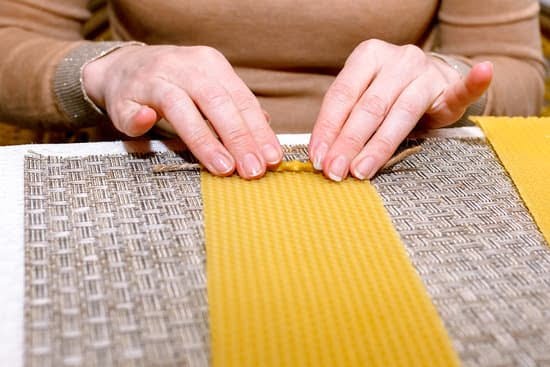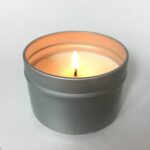Candle making is a popular and therapeutic hobby for many individuals, but it’s essential to remember the importance of regular equipment cleaning. Failure to clean your candle making equipment can have a significant impact on the quality and safety of your candles. In this article, we will discuss how to effectively clean your candle making equipment to ensure the longevity of your supplies and the quality of your finished products.
To properly clean your candle making equipment, you will need specific supplies readily available. Hot water, dish soap, vinegar, baking soda, and microfiber cloths are just a few examples of items that will aid in the thorough cleaning process. These supplies are essential for removing wax residue and maintaining hygienic standards in your workspace.
In the following sections, we will provide you with a step-by-step guide for cleaning various types of candle making equipment such as containers, pouring pots, wicks, and more. We will also cover deep cleaning techniques for removing build-up and residue from your equipment. Additionally, we will offer tips for preventing mold and mildew growth in your supplies to ensure a safe and clean environment for all future candle making endeavors.
Necessary Supplies for Cleaning Candle Making Equipment
When it comes to cleaning candle making equipment, having the necessary supplies on hand is essential for ensuring a thorough and effective cleaning process. By using the right tools and materials, candle makers can maintain the quality of their equipment and ensure the safety of their candles. Here are the essential supplies needed for cleaning candle making equipment:
Hot Water
Hot water is a fundamental component for cleaning candle making equipment. It helps to melt away residual wax and other substances that may have built up on the equipment during the candle making process. Always use hot water, as it can be more effective at breaking down waxes and oils compared to cold or lukewarm water.
Dish Soap
Dish soap is another crucial supply for cleaning candle making equipment. It helps to cut through grease and remove any leftover oils from containers, pouring pots, or utensils used in candle making. Opt for a gentle dish soap that is free from harsh chemicals to avoid leaving behind any unwanted residue on your equipment.
Vinegar and Baking Soda
Vinegar and baking soda are excellent natural cleaners that can be used to tackle stubborn wax residue and stains on candle making equipment. They can also help eliminate odors and disinfect surfaces without leaving behind any harmful chemicals or fragrances.
Microfiber Cloths
Using microfiber cloths for cleaning candle making equipment is highly recommended, as they effectively trap dirt, dust, and grime without leaving lint or streaks behind. They are gentle enough to use on delicate surfaces such as glass containers while still providing thorough cleaning power.
Having these supplies readily available will make the task of cleaning candle making equipment much more manageable, ensuring that your workspace remains hygienic and your candles meet high-quality standards. Regularly keeping these items in stock will make maintaining clean equipment an easier task over time.
By following this guide on how to clean your candle making equipment regularly with proper supplies will guarantee safe production space.
Step-by-Step Guide for Cleaning Candle Making Equipment
Cleaning your candle making equipment is essential for maintaining the quality and safety of your candle products. Regular cleaning helps to prevent wax build-up, remove residue, and keep your equipment in good condition. In this section, we will provide a step-by-step guide on how to clean different types of candle making equipment effectively.
Step-by-Step Guide
- Cleaning Containers: Start by scraping out any excess wax from the containers using a spoon or spatula. Then, wash the containers with hot water and dish soap to remove any remaining residue. For stubborn wax build-up, you can soak the containers in a mixture of hot water and vinegar before scrubbing with a microfiber cloth.
- Cleaning Pouring Pots: Similar to cleaning containers, pouring pots should be scraped clean and washed with hot water and dish soap. Use a non-abrasive sponge or cloth to avoid scratching the surface of the pot.
- Cleaning Wicks: Wicks can accumulate wax residue over time, so it’s important to clean them regularly. Soak the wicks in hot water with baking soda for a few hours to break down any wax build-up, then gently rub off any remaining residue before rinsing thoroughly.
By following these step-by-step instructions, you can ensure that your candle making equipment stays clean and well-maintained. Proper cleaning not only prolongs the life of your equipment but also contributes to the overall quality of your candles.
Remember to incorporate regular cleaning into your candle making routine to achieve optimal results and maintain a safe working environment.
Now that you know how to clean your candle making equipment properly, you can enjoy producing high-quality candles while ensuring the longevity of your equipment.
Deep Cleaning Techniques for Candle Making Equipment
When it comes to candle making, regularly cleaning your equipment is crucial for maintaining quality and safety. Over time, wax residue, wick trimmings, and other debris can build up, impacting the quality of your candles and posing potential safety risks. Proper deep cleaning techniques are essential to ensure that your equipment remains in optimal condition and that your candles meet high standards.
To deep clean your candle making equipment, start by disassembling all removable parts. This includes containers, pouring pots, wicks, and any tools used in the candle making process. Once disassembled, soak the parts in hot water mixed with dish soap or vinegar to help break down any waxy residue. For stubborn residue, baking soda can be used as a gentle abrasive to scrub away buildup.
For more specialized cleaning needs, there are commercial cleaners and solvents designed specifically for candle making equipment. These products are formulated to effectively remove tough wax residue without damaging the equipment. It’s important to carefully follow the instructions provided with these cleaners and use them in a well-ventilated area to ensure safety.
After cleaning, thoroughly dry all equipment before reassembly and storage. Proper drying is crucial for preventing mold and mildew growth. Once dry, store your clean equipment in a cool, dry place away from direct sunlight to maintain its condition until the next use.
By implementing regular deep cleaning techniques for your candle making equipment, you can ensure that your candles are of the highest quality while also maintaining a safe workspace. Taking the time to properly clean and maintain your equipment will ultimately lead to better results in your candle-making endeavors.
| Equipment | Cleaning Method |
|---|---|
| Containers | Soak in hot water and dish soap or vinegar |
| Pouring Pots | Soak in hot water with baking soda scrub |
| Wicks | Clean with microfiber cloth or commercial cleaner |
Preventing Mold and Mildew in Candle Making Equipment
Mold and mildew can be a common issue when it comes to candle making equipment, especially if proper cleaning and maintenance are not consistently carried out. Not only can mold and mildew impact the quality of your candles, but they also pose potential health risks and safety concerns. In this section, we will discuss effective ways to prevent mold and mildew growth in your candle making equipment.
To prevent mold and mildew from developing on your candle making equipment, it is essential to establish a regular cleaning routine using the right supplies. Here are some steps for preventing mold and mildew:
- After each use, thoroughly clean all equipment with hot water and dish soap. This will remove any leftover wax residue or oils that could potentially attract mold.
- Use a mixture of vinegar and water to disinfect your equipment, as vinegar is an effective natural cleaner that can help prevent mold growth.
- Ensure that all equipment is completely dry before storing it. Moisture provides the perfect environment for mold and mildew to thrive, so using microfiber cloths or allowing the equipment to air dry completely is crucial.
By following these preventative measures, you can significantly reduce the risk of mold and mildew development in your candle making equipment, ensuring a safe and hygienic environment for candle production.
Maintaining Safety and Hygiene Standards in Candle Making
When it comes to candle making, maintaining safety and hygiene standards is essential for producing high-quality candles. Keeping your equipment clean not only ensures the purity of your products but also contributes to a safe working environment. Neglecting to clean your candle making equipment can lead to contamination, poor quality candles, and potential safety hazards. This section will provide valuable insights on how to maintain safety and hygiene standards in candle making through regular equipment cleaning.
Importance of Clean and Hygienic Workspace
A clean and hygienic workspace is crucial for candle making as it directly impacts the quality of the final product. Dust, dirt, or residue from previous batches can compromise the integrity of the candles, affecting their appearance and performance. Additionally, maintaining a sanitized environment reduces the risk of bacterial or mold contamination, safeguarding both the products and the individuals involved in the candle making process.
Implementing Regular Cleaning Schedules
To uphold safety and hygiene standards in candle making, it’s important to establish regular cleaning schedules for all equipment used in the process. This includes containers, pouring pots, utensils, surfaces, and any other tools or materials that come into contact with the candle ingredients. By incorporating routine cleaning sessions into your candle making practice, you can prevent the accumulation of dirt, wax residue, or other impurities that may affect the quality of your candles.
Tips for Preventing Contamination
In addition to regular cleaning, there are several measures you can take to prevent contamination during candle making. This includes using dedicated equipment for specific types of wax or fragrance oils to avoid cross-contamination. Proper storage of raw materials and supplies is also essential for maintaining their purity. By following these best practices, you can uphold safety and hygiene standards while producing exceptional candles for yourself or your customers.
With a focus on maintaining safety and hygiene standards through diligent equipment cleaning practices, candle makers can ensure consistent product quality while creating a safe working environment for themselves and others involved in the process.
Troubleshooting Common Issues in Cleaning Candle Making Equipment
Maintaining candle making equipment is crucial for ensuring the quality and safety of your homemade candles. However, even with regular cleaning, you may encounter common issues that can impact the cleanliness and functionality of your equipment. Fortunately, there are solutions to these problems that can help you maintain a hygienic workspace and prolong the life of your candle making tools.
One common issue when cleaning candle making equipment is encountering stubborn wax residue that is difficult to remove. To address this problem, consider using a mixture of hot water and vinegar to soak the equipment before scrubbing with a microfiber cloth. For more persistent residue, baking soda can be used as an abrasive cleaner to help break down the wax build-up. By following these steps, you can effectively remove stubborn wax residue from your equipment without damaging it.
Another issue that may arise during the cleaning process is dealing with lingering odors or discoloration on your candle making equipment. To combat this problem, consider utilizing dish soap with deodorizing properties or adding baking soda to your cleaning solution.
Additionally, if discoloration is an issue, make a paste using baking soda and water and apply it to the affected areas before scrubbing gently with a microfiber cloth. These methods can help eliminate odors and restore the appearance of your equipment.
Finally, rust may develop on metal components of your candle making equipment if not properly dried after cleaning. If rust appears, use a soft-bristled brush or fine steel wool to gently remove it from the affected areas. Afterward, thoroughly dry the equipment and apply a light coating of mineral oil to prevent future rusting.
By implementing these troubleshooting techniques into your regular cleaning routine, you can ensure that your candle making equipment remains in optimal condition for producing high-quality candles.
| Troubleshooting Issue | Solution |
|---|---|
| Stubborn Wax Residue | Use hot water and vinegar or baking soda for stubborn residue |
| Lingering Odors/Discoloration | Utilize dish soap with deodorizing properties or make a paste using baking soda and water |
| Rust Development | Gently remove rust with soft-bristled brush or fine steel wool; apply mineral oil after drying |
Conclusion
In conclusion, maintaining a clean and hygienic workspace is essential for producing high-quality candles and ensuring safety during the candle making process. Regular maintenance and cleaning of candle making equipment not only prevent contamination but also contribute to the longevity of the tools used.
By following the step-by-step guide and utilizing necessary supplies such as hot water, dish soap, vinegar, baking soda, and microfiber cloths, candle makers can effectively clean their equipment and prevent mold, mildew, and other issues from arising.
Additionally, implementing deep cleaning techniques when necessary and using specialized cleaners or solvents can help remove stubborn wax residue or build-up on equipment. It is crucial to address common problems like discoloration, lingering odors, or rust to maintain equipment longevity. Furthermore, proper drying and storage of cleaned equipment can prevent mold and mildew growth in the future.
Overall, by maintaining safety and hygiene standards in candle making through regular cleaning schedules and troubleshooting common issues that may arise, candle makers can ensure optimal results in their craft. By prioritizing regular maintenance and cleaning of candle making equipment, individuals can enjoy a clean and organized workspace that contributes to high-quality candle production.
Frequently Asked Questions
How Do You Clean Equipment After Candle Making?
Cleaning equipment after candle making involves using hot water and dish soap to remove as much wax residue as possible. For stubborn wax, a solvent like mineral spirits can be used to dissolve and remove the remaining residue. It’s important to thoroughly dry the equipment after cleaning to prevent any water damage during future use.
How Do You Get Wax Out of a Candle Maker?
Getting wax out of a candle maker can be done by heating the residual wax until it becomes liquified, then carefully pouring it out of the container. Alternatively, freezing the container can also help in removing the wax by causing it to contract and become easier to remove.
Once most of the wax is removed, any remaining residue can be cleaned with hot water and dish soap.
What Is the Best Thing to Clean Candle Wax With?
The best thing to clean candle wax with is a combination of hot water and dish soap for gentle cleaning of surfaces. For more stubborn residue, a solvent like mineral spirits can effectively break down and remove the wax without damaging most surfaces.
It’s important to always test any cleaner on a small, inconspicuous area first before applying it to larger areas for cleaning.

Welcome to my candle making blog! In this blog, I will be sharing my tips and tricks for making candles. I will also be sharing some of my favorite recipes.





